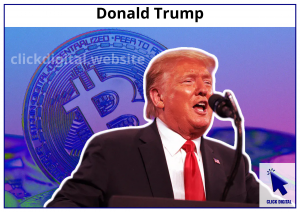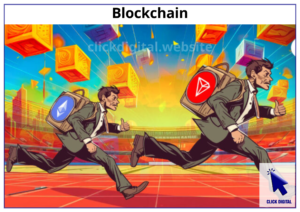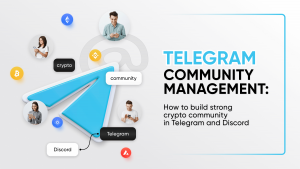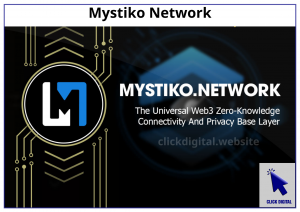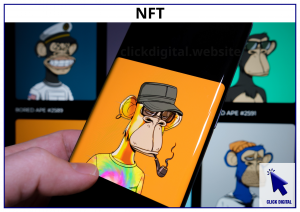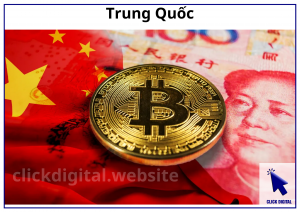Key Takeaways:
- Ethereum Foundation is making important structural changes aimed at refocusing primarily on technical advancements, improving community communication, and strengthening decentralization.
- This comes about after a year of disapproval over the distribution, execution of the roadmap, and potential conflicts of interest resulting in the community asking for a higher degree of transparency and accountability.
- The Foundation is still considering staking a large portion of its ETH reserves as a sustainable revenue source, instead of relying on selling ETH to fund operations.
The success of EF, one of the leading blockchain organizations, stems from its ability to adapt over time. The decision made by one of the founders, Vitalik Buterin, to undertake a massive reorganization of the executive members of the organization has been quite radical and the entire Ethereum society has already experienced an effect, which basically points to the idea that the team will put more resources into the activities of the principles of the project.
Vitalik Buterin
Table of Contents
A Year of Tumult: Understanding the Catalysts for Change
The past year was not at all a usual time for the Ethereum Foundation. Besides participating in the practice of Ethereum and its growth, it likewise suffered from massive disapproval from diverse groups of the community. These concerns were not superficial; they were very serious and could not be dealt with later. Let us take a look at the main drivers for this change in leadership:
Conflict of Interest Concerns and the EigenLayer Saga
The Ethereum Foundation was rocked by a major scandal in May 2024, as some of Ethereum’s top scientists were found to be connected to the EigenLayer Foundation. Both Justin Drake, a long-time EF researcher, and Dankrad Feist took remunerated advisory positions at EigenLayer. This sparked immediate community concerns due to a possible conflict of interest, given that introducing the EigenLayer proof of stake protocol to the Ethereum ecosystem will continue to impact Ethereum’s future.
Dankrad Feist & Justin Drake
In consideration is the series of queries: Did the EF take care to protect its research work? Were the tech people prioritizing their personal financial interests over the collective good of the Ethereum network? As a corrective measure, the EF saw and dealt with the conflict of interest and policy, but the destruction remained. Also in November 2024, the two men, Drake and Feist resigned from their leadership posts. There was a sequence of events that underlined the interdependence of financial individualism and the responsibility related to being part of a project that aims at decentralization. The implementation of policies was lined up by the EF, at the same time they saw to the enforcement of these policies.
The Double-Edged Sword of the Dencun Upgrade
The introduction of the Dencun upgrade in March 2024 was most definitely an extraordinary technical achievement. It led to a tremendous decrease in transaction fees on Ethereum’s layer-2 networks, which could have been by up to 99%. This was a breakthrough for the scalability and user experience associated with the EVM, thus Ethereum is on the road to be a user-friendly environment for developers and end-users.
Dencun upgrade
Regardless of the fact that L2 solutions became popular fast, there were inherent difficulties. The rapid pace of layer-2 roll-up solutions—there were 55 layer-2 solutions by late 2024 according to L2Beat—was the source of the real issue as concerns of revenue would likely be redirected from the base layer of Ethereum to more transaction processing in an off-chain setting. This is the case because at the beginning, Ethereum included some financial incentives for the base layer validators to secure the network, and thus, the shift of transactions to layer-2s would be a potential fall in the incomes of base layer validators. By the end of Token Terminal data showed that Ethereum’s network revenues on the base layer dropped by 99% in the summer of 2024, which made the people who were heavily invested in the base chain very uncomfortable. This problem was shown as a critical gap in the Foundation’s strategy – the Dencun upgrade is a technical achievement, but the EF does not pay any attention to the future consequences of the ecosystem’s economic health for the core base layer.
List of Layer-2s
More News: The Explosion of Layer-2 Networks on Ethereum: Challenges and Opportunities
Operational Spending and the Dilemma of ETH Reserves
Another critique was brought up over how the Ethereum Foundation handles its treasury. Despite being a non-profit organization, the EF has to cover the costs of operations that include funding research, supporting developers, and conducting events. Traditionally, the Foundation was doing this by selling some of its ETH reserves, which was not well taken by the community.
The critics said that instead of “dumping ETH” on the open market, as Eric Conner was saying, the EF should look into other alternatives, the most important of which is locking up a significant amount of its ETH for staking. The Foundation’s habit of turning ETH into stablecoins was seen as not compatible with the project aim, which is to prove the possibility of holding ETH as a long-term asset. On the other hand, EF’s practice of selling ETH on the open market may have contributed to an increased supply and, consequently, price depreciation. Also, it was clear that they were not backing up the Ethereum ecosystem, because ETH was being sold to the external parties instead of being reinvested back into the ecosystem.
The Vision for the Future: A More Decentralized, Collaborative, and Transparent Ethereum
Considering these critiques, Vitalik Buterin put the EF in a clear direction for the future by talking about Ethereum’s main principles and the matters of the community. His mentioned aims therefore seem like a radical change in the organization’s mode of operation and at the same time, a decision to vitally touch the very basic pillars of the whole structure:
Prioritizing Technical Excellence and Developer Support
One of the main priority areas of the new leadership team is the strengthening of technical skills within the Foundation. Part of this includes attracting and nurturing talent that can help in the design and implementation of state-of-the-art technology that will hasten the achievement of Ethereum’s objectives of decentralization, scale, and security. This demonstrates their commitment to providing better resources and support for developers building dApps while upholding the network’s core values. Thus, this is the practical value of Ethereum and the way it differs from other cryptocurrencies. Through this, the EF meets its goal of creating a more comfortable and friendly developer environment, thus they are more innovative and capable of launching apps and services that are in keeping with the network’s vision.
Improving Communication and Transparency
Buterin has already made it known publicly that a lack of open and transparent dialogue between the EF and the Ethereum community is among the issues that have been troubling their members. He emphasized the need for better communication channels, where the Foundation not only shares updates but also gathers community feedback to inform decision-making. By building a strong feedback system, the Foundation aims to foster trust and inclusivity in its operations. In this direction, the foundation will meet the community’s expectations and hence, the organization will be stronger for it since the community will be more actively involved.
Reinforcing Decentralization and Neutrality
Basic concepts have been clarified by Buterin in that the EF will never indulge themselves in political lobbying that is neither their job nor the purpose they were established for, and further will use it to mitigate potential adverse manipulation by external actors to the platform. It is crucial for the platform to remain neutral and inclusive. The Foundation will refrain from political lobbying and regulatory influence, ensuring it does not monopolize control over Ethereum’s development community. This sense of unconventional management also reflects in the organizational structure and operational practices of EF.
The goal is to ensure continuous improvement that benefits the entire community, not just the Foundation and a select few.
Exploring ETH Staking and a Sustainable Financial Model
EF’s consideration for staking its ETH reserves means the Foundation is now addressing and giving attention to community issues. Even though past arguments on regulations and conflicts and taking a side on hard forks may have been reasonable, Buterin has declared that these problems are not insoluble.
Staking might be the reason for a brand-new EF business model that it would be capable of selling or not BUying ETH for operational purposes. Through the use of the consensus mechanism of the network to make money, EF could perhaps be more active in taking part in the ecosystem, too, which is very encouraging for the network since it is part of a network security by the involvement of it in the network security by its activeness. This is the opposite of the traditional way of the company, wherein the EF would be a part of the ecosystem, getting from its participation, instead of selling the asset which powers the ecosystem.
Conclusion
The Ethereum Foundation’s leadership reform is indeed a high-level and most probably also a tough change to make. Successfully implementing the new tactics requires a drastic shift in the current modus operandi of the Ethereum blockchain ecosystem while at the same time inventing new solutions to the environment. The transformation may be intricate and flexibility may be required to all the involved stakeholders.
The community acknowledges the importance of these reforms and anticipates a more decentralized, transparent, and collaborative Ethereum Foundation. It shows the community’s growing sense of ownership over the project and the increased accountability of its leaders. The restructuring is a prime opportunity to empower the project, enhance the close-knit community, and make Ethereum’s foundation more stable in the long run. It will take a while to know if changes, such as more transparency, more cooperation, and more decentralization, really are coming. The upcoming months are very important for the new concept to be adopted and for the promised Ethereum revolution to happen.




